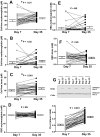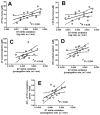Predicting storage-dependent damage to red blood cells using nitrite oxidation kinetics, peroxiredoxin-2 oxidation, and hemoglobin and free heme measurements
- PMID: 26202471
- PMCID: PMC4715702
- DOI: 10.1111/trf.13248
Predicting storage-dependent damage to red blood cells using nitrite oxidation kinetics, peroxiredoxin-2 oxidation, and hemoglobin and free heme measurements
Abstract
Background: Storage-dependent damage to red blood cells (RBCs) varies significantly. Identifying RBC units that will undergo higher levels of hemolysis during storage may allow for more efficient inventory management decision-making. Oxidative-stress mediates storage-dependent damage to RBCs and will depend on the oxidant:antioxidant balance. We reasoned that this balance or redox tone will serve as a determinant of how a given RBC unit stores and that its assessment in "young" RBCs will predict storage-dependent hemolysis.
Study design and methods: RBCs were sampled from bags and segments stored for 7 to 42 days. Redox tone was assessed by nitrite oxidation kinetics and peroxiredoxin-2 (Prx-2) oxidation. In parallel, hemolysis was assessed by measuring cell-free hemoglobin (Hb) and free heme (hemin). Correlation analyses were performed to determine if Day 7 measurements predicted either the level of hemolysis at Day 35 or the increase in hemolysis during storage.
Results: Higher Day 7 Prx-2 oxidation was associated with higher Day 35 Prx-2 oxidation, suggesting that early assessment of this variable may identify RBCs that will incur the most oxidative damage during storage. RBCs that oxidized nitrite faster on Day 7 were associated with the greatest levels of storage-dependent hemolysis and increases in Prx-2 oxidation. An inverse relationship between storage-dependent changes in oxyhemoglobin and free heme was observed underscoring an unappreciated reciprocity between these molecular species. Moreover, free heme was higher in the bag compared to paired segments, with opposite trends observed for free Hb.
Conclusion: Measurement of Prx-2 oxidation and nitrite oxidation kinetics early during RBC storage may predict storage-dependent damage to RBC including hemolysis-dependent formation of free Hb and heme.
© 2015 AABB.
Conflict of interest statement
Figures







References
-
- Glynn SA. The red blood cell storage lesion: a method to the madness. Transfusion. 2010;50:1164–9. - PubMed
-
- Hod EA, Zhang N, Sokol SA, Wojczyk BS, Francis RO, Ansaldi D, Francis KP, Della-Latta P, Whittier S, Sheth S, Hendrickson JE, Zimring JC, Brittenham GM, Spitalnik SL. Transfusion of red blood cells after prolonged storage produces harmful effects that are mediated by iron and inflammation. Blood. 2010;115:4284–92. - PMC - PubMed
-
- Donadee C, Raat NJ, Kanias T, Tejero J, Lee JS, Kelley EE, Zhao X, Liu C, Reynolds H, Azarov I, Frizzell S, Meyer EM, Donnenberg AD, Qu L, Triulzi D, Kim-Shapiro DB, Gladwin MT. Nitric oxide scavenging by red blood cell microparticles and cell-free hemoglobin as a mechanism for the red cell storage lesion. Circulation. 2011;124:465–76. - PMC - PubMed
Publication types
MeSH terms
Substances
Grants and funding
LinkOut - more resources
Full Text Sources
Other Literature Sources
Research Materials

